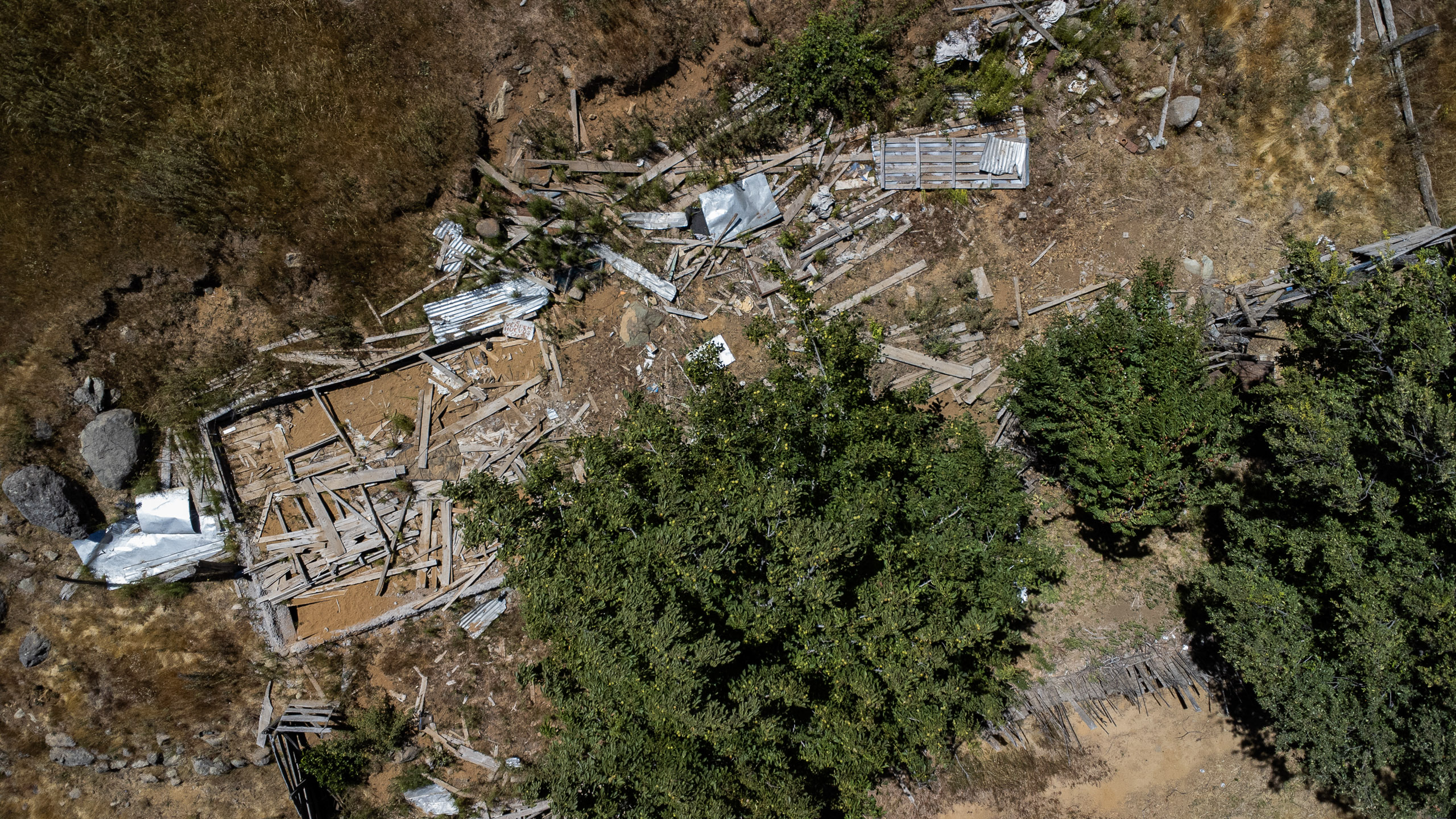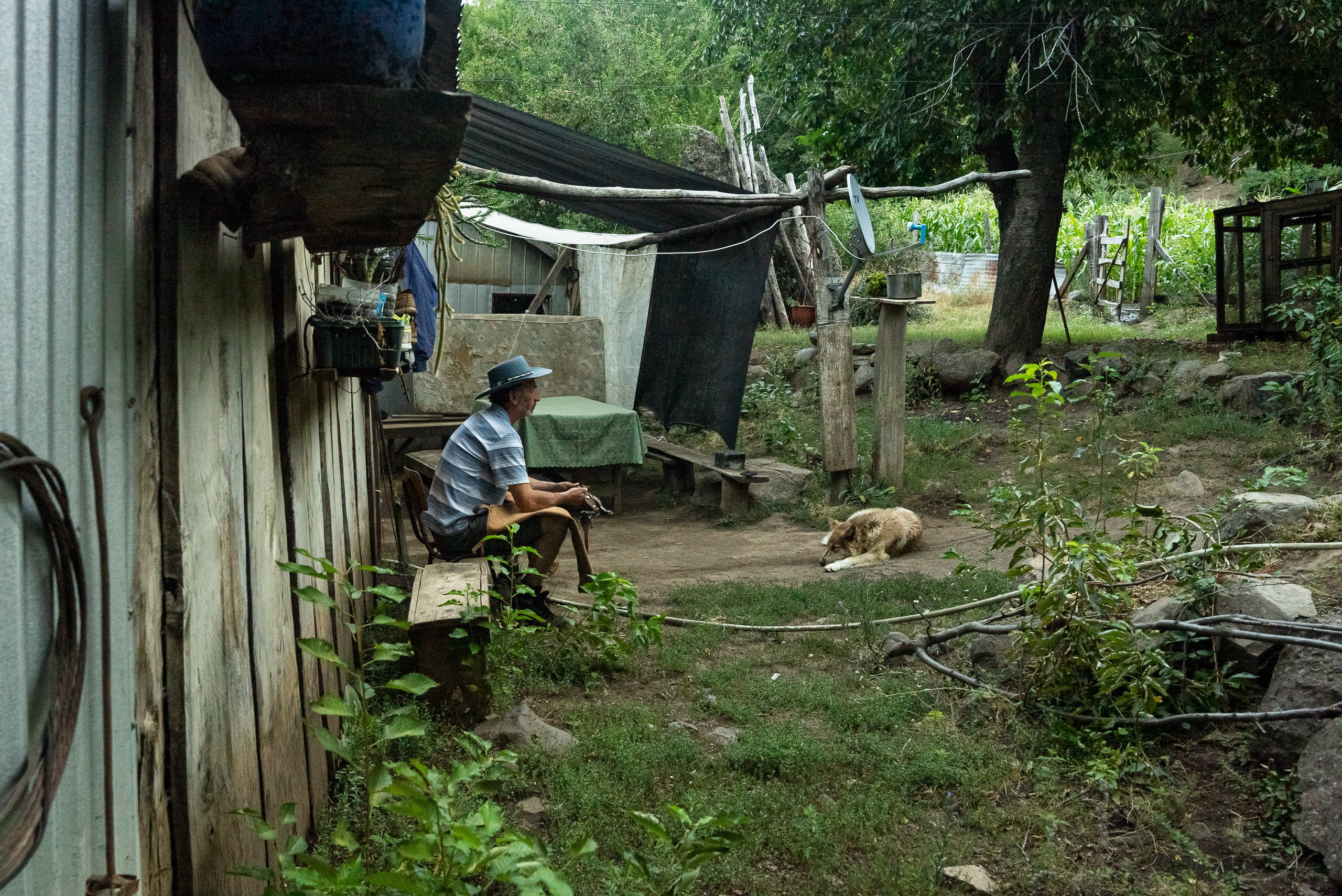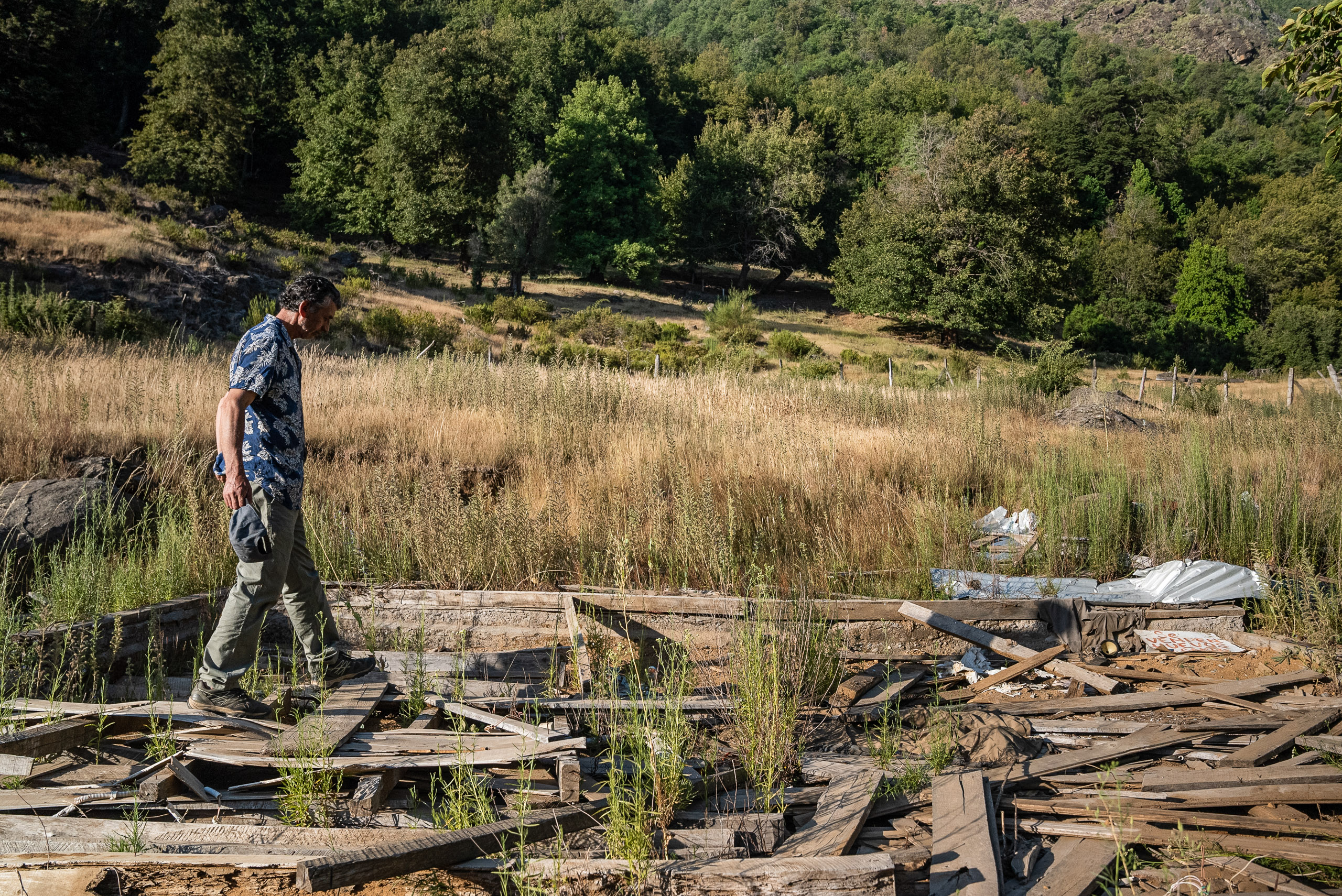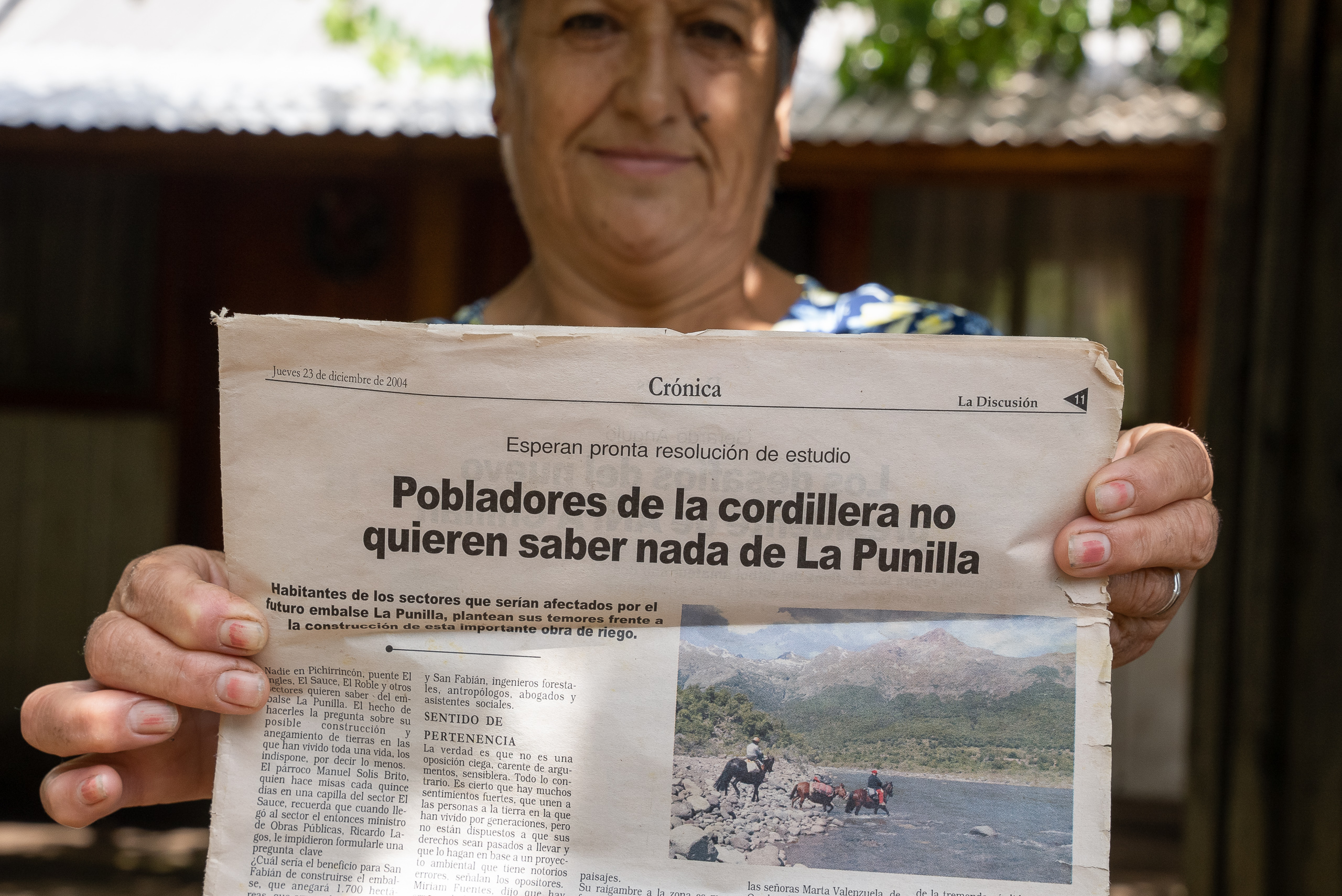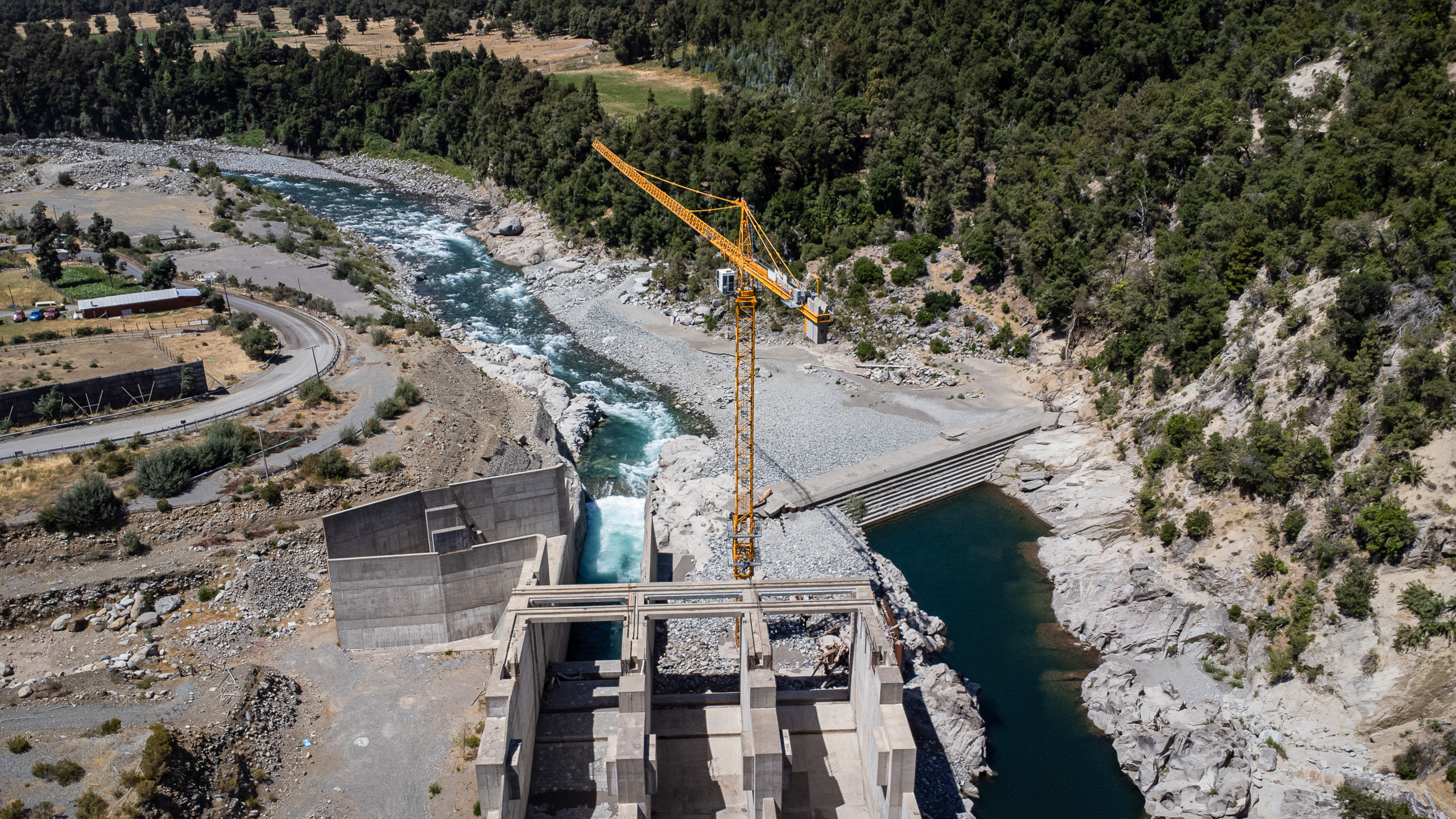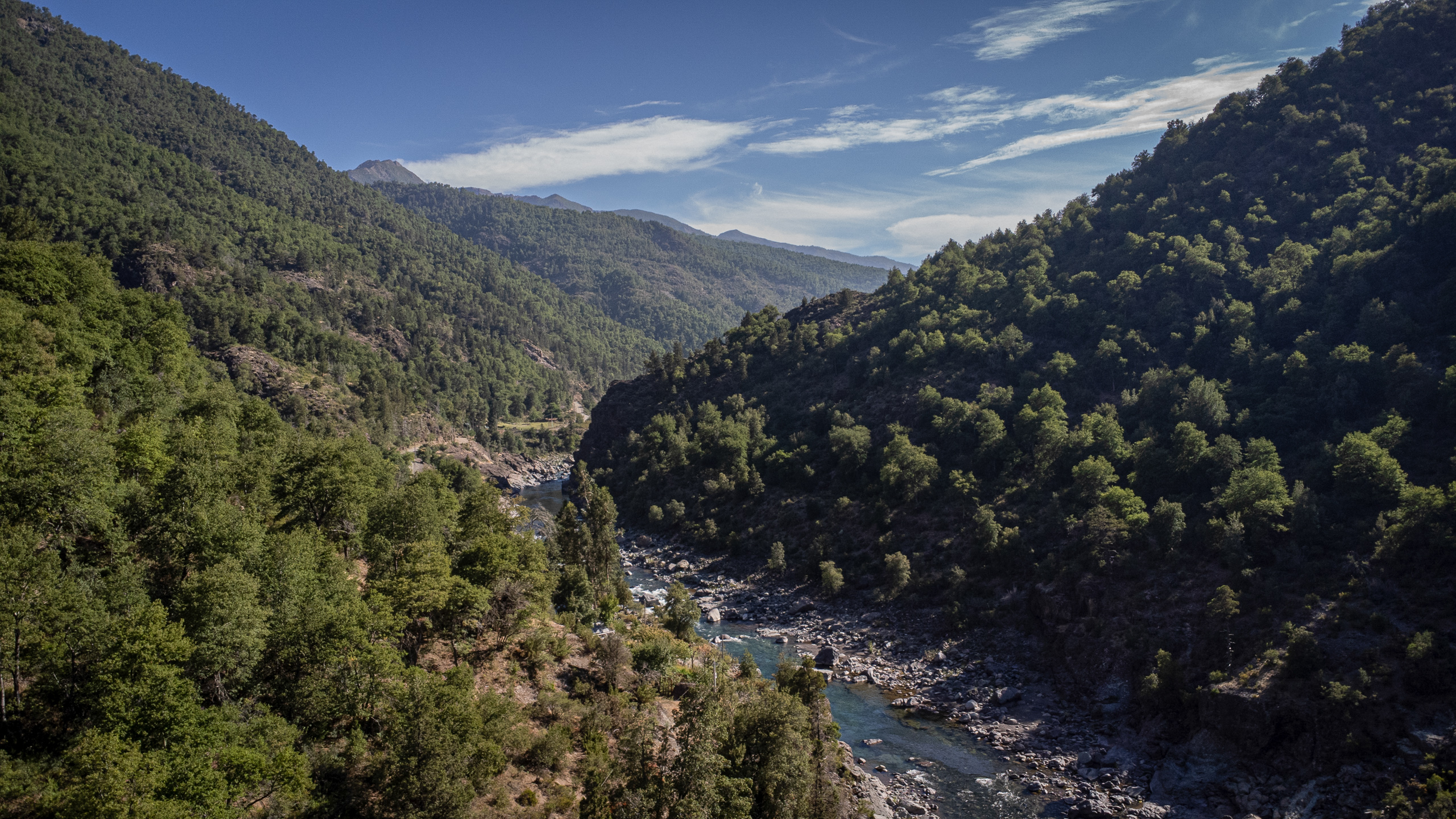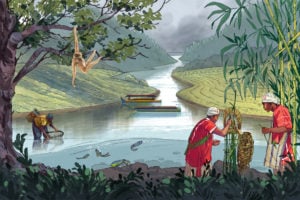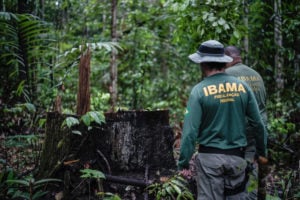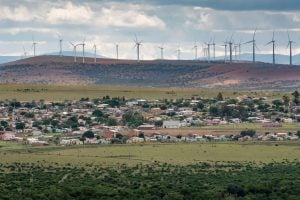On 21 November 2018, five families were forcibly evicted from their homes near San Fabián, a commune in the mountainous province of Punilla, in central Chile. Police arrived unannounced to inform residents of their fate, and guarded workers linked to the Italian construction company Astaldi, as heavy machinery reduced their houses to rubble.
These acts were in the name of Nueva La Punilla, a long-planned, multi-purpose reservoir project. Designed for hydropower and irrigation purposes, the Punilla reservoir could flood an area of 1,700 hectares behind a 136-metre-high retaining wall on the Ñuble River. Should it be realised, the project would also flood parts of the Nevados de Chillán-Laguna del Laja Biological Corridor, a Unesco Biosphere Reserve.
In December 2018, residents secured an injunction to suspend the eviction orders through an environmental tribunal in the city of Valdivia, in southern Chile, while a lawsuit was being prepared against the reservoir project. However, in April 2020, the same tribunal ruled in favour of Astaldi, finding no environmental damage or psychosocial impacts had occurred, and denying residents’ claims for reparations.
Astaldi had been granted the concession for the project by Chile’s public works ministry in 2016, and had an environmental impact study approved, but it is yet to break ground: Astaldi’s contract was cancelled in 2021 amid a financial crisis at the company, and the ministry’s miscalculation of the reservoir’s storage capacity. The Chilean state ultimately paid an unknown amount to Astaldi in compensation.
Chile’s public works ministry has since issued a new tender for the Punilla reservoir, initially setting a 19 April 2024 deadline for technical offers, but which has now been extended until December. As of August 2023, 21 companies had registered their interest, among them five Chinese companies, including the China Harbour Engineering Company and China Civil Engineering Construction.
In the meantime, those evicted from their homes find themselves in temporary accommodation, still awaiting a definitive solution.
Compensation lacking
“The mountain range for me is my life, it has given me everything. Once you’ve gotten old, it’s difficult to be taken away from where you’ve made your life,” says Héctor López Benavides, a 57-year-old livestock herder who has lived in San Fabián since his late twenties. He raised his family here and built a life raising cows, sheep and horses. During the evictions, his house was the first to be destroyed.
The evicted residents had rejected a displacement plan drawn up by the public works ministry in 2018. López says his community deemed the compensation offered to be insufficient. Months later, the expropriations went ahead.
“It has been five years since we were evicted and it has been hard,” says López. “It was a tremendous change because we had to start from scratch and manage on our own; there was no help from anyone to start our lives elsewhere.”
Currently, López works tending livestock at a farm in Laguna Las Truchas, over 40 kilometres east of his former home, and not far from Chile’s border with Argentina. Without land of his own, he says his typical way of life and income stream has become impossible.
Iván Labrín Villalobos says he has suffered similarly. Another local livestock herder, Labrín kept hundreds of goats before the evictions, which he was forced to sell; some were lost. He now lives with relatives.
López recounts the project’s citizen participation process: the public works ministry, he says, “thought we were ignorant people from the mountains, but I never allowed them to treat us like that.” During this consultation, the ministry collected livestock data to calculate compensation payments for their expropriation. According to those affected, they were awarded CLP 30 million (USD 30,600) per plot of land and CLP 18 million (USD 18,360) per house.
Miriam Fuentes Contreras, who was also evicted with her family, says the ministry’s plan did not include compensation for income losses; a “livestock plan” was mentioned but never realised. She says their housing payment was therefore not enough for her family to conserve their lifestyle. “We refused for a long time to sign the agreement to receive the amount they offered us,” she says. “We finally did it in 2022, out of necessity.”
Labrín says he recently signed the agreement for the same reason. Near the expropriated area, he now maintains a plot of land on a hillside behind his former home. He was told he could receive compensation to build a new house here, but on the condition that he self-fund the construction of an access road to the site. “I shouldn’t have to do that,” Villalobos points out. “It was up to them to relocate me.”
Legal proceedings and risks
After the Astaldi contract collapsed in 2021, the public works ministry assumed ownership of the project – the announcement of this year’s new auction was made by its minister, Jessica López. The official public details confirm the project to be fundamentally unchanged since its progress during Chile’s previous administration, under former president Sebastián Piñera (2018-2022).
This lack of change has disappointed local community advocates who hoped for something different under current president Gabriel Boric. “At the beginning we had high expectations with the new government,” confirms César Uribe, a spokesperson for Ñuble Libre. His organisation is one of the Ñuble River’s most active defenders. “We also had a lot of conversations: two ministers even came to San Fabián to meet with us.
“The government promised to generate a new analysis of the project, but in the end, there was never really an analysis.”
Uribe is deeply critical of the Punilla reservoir plan: “This project has been failing for a long time and its design is absolutely obsolete for today’s reality. We are talking about a project from the 1960s – that is, almost 70 years ago. In that sense, it obviously does not meet today’s standards and reality.”
In the aftermath of the Astaldi debacle, SMA, Chile’s environmental regulator, commenced proceedings to sanction the project. This process is considering 10 separate areas of investigation, three of which have been categorised as serious; these include the failure to update relocation plans for evictees and the failure to consider issues concerning livestock. The proceedings continue.
San Fabián lawyer Ricardo Frez Figueroa has guided the evictees through the SMA sanctioning process. Frez – who also directs Defensa Ambiental, an NGO dedicated to protecting the environment – says these sanctions may be passed on to whichever company is awarded the tender.
The incoming company will also have to tackle electricity transmission hurdles: the project requires a new 23 km power line to distribute an anticipated annual 525 GWh to the national electricity grid.
While the construction of this line had previously been approved, in February the environmental court of Valdivia annulled its environmental authorisation. The ruling cited concerns of possible impacts for the huemul deer, endemic to Chile and Argentina; the Ñuble region, of which Punilla is a part, is the species’ last remaining habitat in central Chile.
In addition to Nueva La Punilla’s reservoir and accompanying transmission line, another local project of concern is the Ñuble de Pasada reservoir, also known as Hidroñuble. Although construction of the project was started, works have been stalled for more than eight years because it will rely upon Nueva La Punilla’s transmission line. This state of play has led various organisations to call for the definitive closure of Hidroñuble.
Stifling biodiversity
The Punilla project’s other great environmental challenge is the Nevados de Chillán-Laguna del Laja Biological Corridor. The area became a Unesco Biosphere Reserve in 2011, with the aim of protecting the huemul deer.
Two forest biomes converge here, making the area particularly biodiverse: the sclerophyllous forest of Chile’s central region, which is adapted to drier conditions and home to hundreds of endemic species already threatened by urbanisation, agricultural expansion and fires; and the Valdivian temperate forests that stretch from the country’s south-west, one of Earth’s oldest forests and characteristically similar to a tropical rainforest.
Intentionally flooding such a celebrated site has inevitably attracted controversy.
Bernardo Reyes, an ecologist and director of the Chilean NGO Ethical Foundation of the Forests (EEB), says the consequences of flooding this area would be manifold: “It’s going to be similar to a gigantic logging race across 1,700 hectares. This is a major impact that increases habitat fragmentation and therefore the fragility of many species that have conservation problems.”
In addition, Reyes says increasingly extreme, climate-driven disasters make the mitigatory qualities of biodiversity hotspots ever more crucial: “In Chile, we have increasingly intense droughts and fires, and these 1,700 hectares act synergistically with this, and can therefore have a much more intense impact on the biodiversity of the area.”
Meanwhile, others are highlighting how mega-dam projects can lead to greater water scarcity. According to the environmental public policy expert Pamela Poo, “you’re going to have water for some irrigation, but then what starts to happen is the expansion of the extractive frontier.” This is especially pertinent considering the nearly 15-year mega-drought affecting much of Chile that has brought consequences for Ñuble: the region is already subject to a water shortage decree, enforced by the public works ministry until at least April 2024, and which lays out a collection of special measures in an attempt to ease water scarcity.
Project beneficiaries
In the context of Chile’s mega-drought, the Punilla project is triggering important conversations about water use among affected communities.
Chile’s 1981 water code separated out the ownership of water from land, then gave full authority for water use to the state – it can grant water rights to private parties free of charge and in perpetuity. The code was reformed in 2022 and again in 2023, but the privatisation and commodification of Chile’s water remains a significant problem for many communities.
Alexander Pánez Pinto, a social sciences academic at the University of Bío-Bío, conducted a soon-to-be-published study into the water rights holders in the reservoir’s proposed location. In an advance copy seen by Dialogue Earth, the agricultural company Cruz del Sur is named as a major rights holder that consumes 294 litres of water per second.
Pánez says Chile has conjured a “perfect storm” between the overexploitation of watersheds for productive uses, the privatisation of water under the code, and the impacts of climate change.
We are at the end of our rope. The company that wins this project will also buy this conflictHumberto Illanes Sepúlveda, president of Mesa Punilla
Humberto Illanes Sepúlveda is the president of Mesa Punilla, a network of 16 rural and urban organisations that are based in the area of the Punilla project. According to him, the main beneficiaries of the project will be those with the water rights – large companies like Cruz del Sur. “The rest of us receive nothing, only damages,” he says. “We bear the sacrifices.”
In September 2022, Mesa Punilla submitted 299 petitions to the Ministry of Public Works regarding the Punilla project. Concerned with mitigation and compensation demands mainly related to water use, road designs and the future of the biosphere reserve, the petitions remain under evaluation and unresolved.
Illanes Sepúlveda says the project has “gaps everywhere” and is generating uncertainty. “We still don’t have concrete answers and we want legal certainty. We have been patient, prudent and flexible. But people have had enough and there is no more confidence in the ministry. We are at the end of our rope. The company that wins this project will also buy this conflict.”
The San Fabián provincial government and the Ministry of Public Works both declined to comment on the issues raised in this article.

